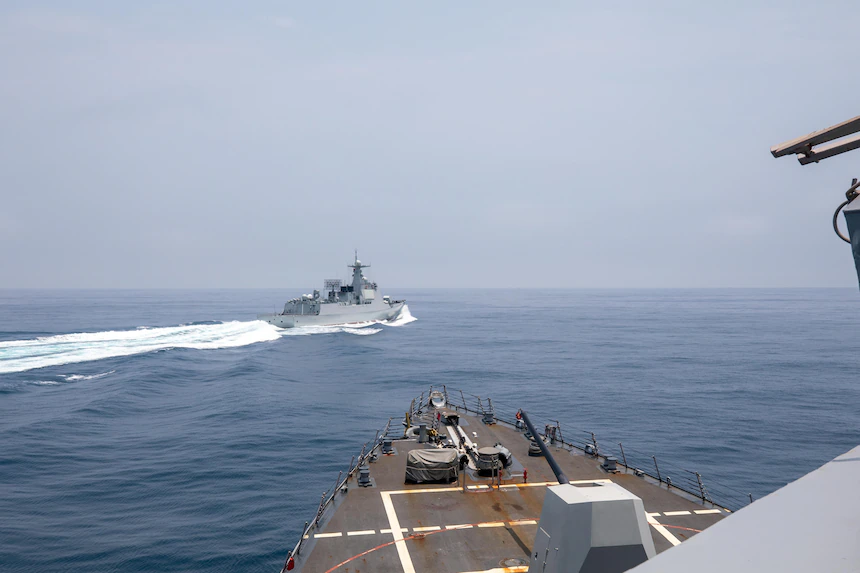
*****
ARLINGTON. Va. — The U.S. Navy needs a non-provocative but purposeful presence in the seas around China to deter challenges to international rules and the security interests of the United States, the chief of naval operations said.
CNO Admiral Michael Gilday, speaking June 7 to an audience at the Brookings Institution, a Washington think tank, remarked on the recent incidents in the South China Sea and Taiwan Strait, particularly the unsafe maneuvers of the PLAN(N) destroyer Luyang III last week in the vicinity of the U.S. Navy destroyer USS Chung-Hoon and Canadian frigate HMCS Montreal.
“We’re handling that, I think, very well, very professionally,” Gilday said.
“I am encouraged by the most recent turn in dialogue by senior leaders with the toning down of, I would say, militaristic tone,” the CNO said. “I think that’s been helpful. We need to continue to operate out there, and we need to continue to operate forward. We need to assure allies and partners. At the same time, we need to deter anybody, any nation that tends to challenge those international rules, challenge the security interests of not only the United States but our allies and partners and put our economic interests in jeopardy.
“So, I think we need to be out there, and we need to be in the way,” the admiral said. We can’t just be milling about. It has to be purposeful, and it has to be non-provocative. Let me just underscore that.”
Gilday said he was concerned about the “lack of transparency” of the Chinese military and “their intentions with respect on how they intend to use their navy to reach President Xi’s goals are concerning with respect on military expansion.”
Gilday also noted the positive contribution of the Chinese PLAN Navy in anti-piracy operations in recent years off the coast of East Africa.
“They have been good partners with combating piracy, thwarting it, and keeping those sea lanes open for all,” he said. “That should be a model for the behavior that we should expect from the PRC. I would encourage more of those types of collaborative operations at sea that benefit all of us.”
Gilday noted that “mil-to-mil [military-to-military] relationships are intended to be a shock absorber. No matter the political climate, those mil-to-mil relationships have to be steady, predictable, and they have to be very measured.”
Also speaking in the seminar was Peter Levesque, president of CMA CGN shipping company and of American President Lines, who remarked on the tensions in the South China Sea.
“The major challenge for us is, obviously, what happens in the South China Sea,” Levesque said. “Five trillion dollars of goods flow through the South China Sea every year. It’s a major shipping lane, obviously, for CMA and for the other carriers. We’re worried about what everybody’s worried about, that two planes go bump in the night, or two ships go bump in the night accidentally and spiral into something bigger, and all of a sudden, we can’t use those trade lanes or insurance companies won’t insure our ships to go through those trade lanes.
“It’s a real concern, and I don’t think we fully comprehend how big of an impact that would be not only to the global supply chain but the U.S. supply chain in particular if tensions get to the point where that’s an unusable space,” he said.






